Antisemitism has a long history – 2600-3200 years depending on source – and has its influence on the political outcome of the Arab–Israeli conflict even today. Anti-Zionism is a cover for modern-day antisemitism. Israel, Northern America and (Western) Europe have shared ideals of democracy, human rights and freedom. However their views about Arab-Israeli conflict differ regularly more or less so my question is which are the roots of modern anti-Zionism and bias against Israel.
In my opinion disinformation and the power of international media coverage are the main aspects in today’s anti-Zionism. Earlier in the 1960s and 1970s Western powers were influenced by the “oil weapon”. This combination creates the roots of antisemitism and/or anti-Zionism especially in present day Europe.
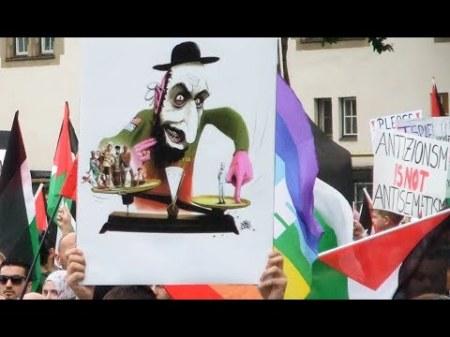
Oil weapon
In the 1967 Six Day War, when Israel’s existence was threatened, France’s President Charles de Gaulle took a pro-Arab direction and instituted a weapons embargo on the Middle East. Verbal attacks against Israel were sometimes accompanied by anti-Semitic statements. However shortly after the Six-Day-War, the United States replaced France and became Israel’s unfailing ally. In his press conference on 27 November of that year de Gaulle included a much-publicized remark, calling the Jews “an elitist and domineering people.”
The 1967 Six-Days-War marked a turning point in the global oil market. In reaction to the June 1967 war, Saudi Arabia, Kuwait, Iraq, Libya, and Algeria banned oil shipments to the United States, United Kingdom, and West Germany. But oil was abundant and cheap during this time and newly deployed “supertankers” conveyed oil to markets that needed it. The United States was the primary source of spare oil production capacity at the time. The United States increased production by about 1 mbd and Venezuela and Iran (under the Shah) were able to make up the rest, ameliorating the shortage. After the initial shock, a maximum of 1.5 million barrels per day (mbd) of oil was removed from the market from June through August 1967. In conclusion the “oil weapon” largely failed in 1967, it was ineffective and was most harmful to the oil producing countries that gave up substantial revenue during the embargo.
 The Yom Kippur War 1973 gave a new understanding of the role oil could play in geopolitics. After the 1967 War there was a rapid demand growth consumed U.S. spare oil production capacity, and by 1970 net oil imports to the United States were rising rapidly; there was no longer the source of spare capacity and “security margin” in the oil market. At the same time, oil production in the Middle East was also growing quickly, meeting two-thirds of global demand growth between 1960 and 1970. The net loss of supply was 4.4 mbd by December 1973, representing 14 percent of internationally traded oil. There was simply not enough oil available to meet the shortfall.
The Yom Kippur War 1973 gave a new understanding of the role oil could play in geopolitics. After the 1967 War there was a rapid demand growth consumed U.S. spare oil production capacity, and by 1970 net oil imports to the United States were rising rapidly; there was no longer the source of spare capacity and “security margin” in the oil market. At the same time, oil production in the Middle East was also growing quickly, meeting two-thirds of global demand growth between 1960 and 1970. The net loss of supply was 4.4 mbd by December 1973, representing 14 percent of internationally traded oil. There was simply not enough oil available to meet the shortfall.
On October 6, 1973, Egypt attacked the Bar Lev Line in the Sinai Peninsula and Syria launched an offensive in the Golan Heights, both of which had been occupied by Israel during the 1967 Six-Day War. On October 12, 1973, US president Richard Nixon authorized Operation Nickel Grass, a strategic airlift to deliver weapons and supplies to Israel in order to replace its materiel losses, after the Soviet Union began sending arms to Syria and Egypt.
The Arab oil embargo created a specific oil ban on the Netherlands, because the Netherlands supported Israel and Rotterdam was the main port for Northern Europe. The impact of the embargo was thus multiplied. As a result, oil prices in Europe rose sharply. Indeed the price rises had a much greater impact in Europe than the embargo. Europe realized how dependent it was on the Arab world.
Israel was one of the few countries unaffected by the embargo, since it could extract sufficient oil from the Sinai. But to supplement Israel’s over-taxed power grid, Harry Zvi Tabor, the father of Israel’s solar industry, developed the prototype for a solar water heater now used in over 90% of Israeli homes.
Due the “first oil shock” Western Europe began switching from pro-Israel to more pro-Arab policies. This change strained the Western alliance. The US, which imported only 12% of its oil from the Middle East (compared with 80% for the Europeans and over 90% for Japan), remained staunchly committed to Israel. Some European nations and Japan sought to disassociate themselves from United States foreign policy in the Middle East to avoid being targeted by the boycott. With the embargo in place, many developed countries altered their policies regarding the Arab-Israeli conflict. These included the UK, which refused to allow the United States to use British bases and Cyprus to airlift resupplies to Israel, along with the rest of the members of the European Community.
France supplied Mirage planes Israel had already bought to Libya; they were subsequently transferred to Egypt and used in the 1973 Yom Kippur War. French Foreign Minister Jean Sauvagnargues was the first Western official to meet Yasser Arafat, doing so in 1974 in Beirut. A year later the PLO opened its first European diplomatic office in Paris, while its charter was calling for the elimination of IsraelFrance also supplied the Osirak nuclear reactor to Iraq. Eventually, Israel had to take exceptional military action to destroy it. This led to Iraqi Scuds being launched against Israel in the first Gulf War. Also Canada shifted towards a more pro-Arab position after displeasure was expressed towards Canada’s mostly neutral position.
On November 7, 1973, the Saudi and Kuwaiti governments declared Japan an unfriendly” country to encourage it to change its non involvement policy. It received a 5% production cut in December, causing a panic. On November 22, Japan issued a statement “asserting that Israel should withdraw from all of the 1967 territories, advocating Palestinian self-determination, and threatening to reconsider its policy toward Israel if Israel refused to accept these preconditions”. By December 25, Japan was considered an Arab-friendly state..
The percentage of US oil which comes from the nations bordering the Persian Gulf remained steady over the decades, with a figure of a little more than 10% in 2008. During last four decades the ”oil weapon” has lost most part of its influence, for example in 1974, seven of the 15 top Fortune 500 companies were oil companies, falling to four in 2014.

Palestinians as KGB project
“Zionism is the main threat to the USSR and to the Soviet bloc.” (Vladimir Kryuchkov, KGB:n päällikkö 1988)
“We have only to keep repeating our themes that the United States and Israel are fascists, Imperial-Zionist countries bankrolled by rich Jews” (Yuri Andropov, as KGB chairman)
In 1948, as Israel declared independence, the armies of five Arab nations attacked the new nation. The USSR’s Joseph Stalin, hopeful that Israel’s socialist roots would lead it to join the Communist bloc, instructed a country it controlled, Czechoslovakia, to provide Israel with the arms needed for defense. However, upon later learning of Stalin’s murder of 20 million people, Israeli society rejected communism. The idea of Zionism as a hostile ideology began to solidify in the post-World War II USSR in the late 1940s, once it became clear that Israel was aligning itself with the ‘imperialist camp’ rather than the Soviet Union. As a result, Moscow shifted its support to Arab dictatorships. After the Six-Day War, all members of the Warsaw Pact (apart from Romania) severed their ties with Israel.
A massive Soviet anti-Zionist campaign entered a particularly active stage in 1967. Operation SIG (1967-1988) is the KGB operation to sow worldwide disapproval for the US and Israel. SIG is the Russian acronym for Sionistskiye Gosudarstva, or “Jewish (or Zionist) Government.” The operation started shortly after 1967, when the drive for Arab unity collapsed along with the economies of the armies that attacked Israel. The core idea of SIG was rhat Palestine is not just the name for a geographic region, but the home for a distinct and indigenous people, the Palestinian Arabs. Its Jewish citizens are colonizers from some unidentified foreign country. (More about this disinformation project in “The KGB’s Middle East Files” a which brings to light information mined from some 6,000 KGB documents smuggled to the West in the early 1990s).
KGB had trained Yasser Arafat at its Balashikha special-ops school east of Moscow and in the mid-1960s decided to groom him as the future PLO leader. First, the KGB destroyed the official records of Arafat’s birth in Cairo, replacing them with fictitious documents saying that he had been born in Jerusalem and was therefore a Palestinian by birth. The KGB’s disinformation department then went to work on Arafat’s four-page tract called “Falastinuna” (Our Palestine), turning it into a 48-page monthly magazine for the Palestinian terrorist organization al-Fatah. Jordan’s claims to represent the Palestinians were then permanently undercut by the Arab League’s declaration at the Rabat Conference that the PLO was the sole legitimate representative of the Palestinian people.
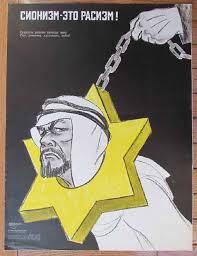 Classified KGB documents reveal how the Soviet spy agency transformed Arab terrorists to freedom fighters. The justification for the war on terror required a framework report on Israel, on the one hand, as a racist illegal genocide, and, of course, its indigenous people. The PLO named this oppressed people the Palestinian people. The irony is that during the British Mandate in Palestine, Jews living mainly in the area were understood as distinct from the Arabs living there, whose own characterization of the area was balad esh-sham – the province of Damascus – because at that time they considered themselves South Syrians.
Classified KGB documents reveal how the Soviet spy agency transformed Arab terrorists to freedom fighters. The justification for the war on terror required a framework report on Israel, on the one hand, as a racist illegal genocide, and, of course, its indigenous people. The PLO named this oppressed people the Palestinian people. The irony is that during the British Mandate in Palestine, Jews living mainly in the area were understood as distinct from the Arabs living there, whose own characterization of the area was balad esh-sham – the province of Damascus – because at that time they considered themselves South Syrians.
(More about KGB and its anti-Israel propaganda operations in publication of Informing Science Institute )
On the bottom end The West Bank has never collectively belonged to the Palestinian Arabs, to the so-called Palestinians. They only own private plots there like Jews. UN Resolution 242 of 1967 also does not recognize the “Palestinian Arab people” from whom a country would have been deported that should be returned to them. This imaginary nation was not invented until 1967.
An analysis Soviet Anti-Zionism and Contemporary Left Antisemitism by Izabella Tabarovsky gives very good backgroud USSR’s antisemitism/-Zionism campaign. She concludes her analysis as follows:
The messaging emanating from today’s far-left anti-Zionist camp is strikingly similar to the messaging of the Soviet anti-Zionist campaigns. From the claims of Zionist collaboration with the Nazis in the Holocaust, to the idea of Zionism as an inherently racist and oppressive ideology, to the concept of Israel as a settler-colonialist state that engages in genocidal behavior and apartheid – all of these ideas were part and parcel of the Soviet anti-Zionist narrative.
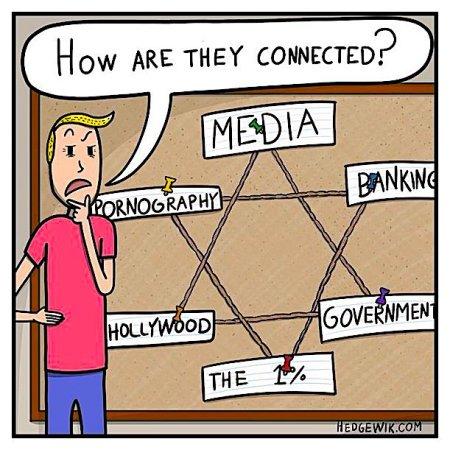
Anti-Zionism
Anti-Zionism is a cover for modern-day antisemitism, it may be motivated by prejudices against Jewish people, or that it creates a climate where anti-semitism is viewed as acceptable. The roots of modern antisemitism are quite well concluded by Jerome Chanes who identifies six stages in the historical development of antisemitism:
-
Pre-Christian anti-Judaism in ancient Greece and Rome which was primarily ethnic in nature
-
Christian antisemitism in antiquity and the Middle Ages which was religious in nature and has extended into modern times
-
Traditional Muslim antisemitism which was—at least, in its classical form—nuanced in that Jews were a protected class
-
Political, social and economic antisemitism of Enlightenment and post-Enlightenment Europe which laid the groundwork for racial antisemitism
-
Racial antisemitism that arose in the 19th century and culminated in Nazism in the 20th century, and
-
Contemporary antisemitism which has been labeled by some as the New Antisemitism
Chanes suggests that these six stages could be merged into three categories: “ancient antisemitism, which was primarily ethnic in nature; Christian antisemitism, which was religious; and the racial antisemitism of the nineteenth and twentieth centuries.”
One should note that there is also Jewish anti-Zionism which enjoyed support in the Jewish community especially before WWII; for esxample some Orthodox Jews opposed the creation of a Jewish state and the Jewish section (Yevsektsiya) of the Communist Party in the Soviet Union, targeted the Zionist movement. The full knowledge of the Holocaust altered the views of many anti-Zionists as many saw Israel’s establishment as a historic necessity to provide a refuge for the surviving Jews of Europe.
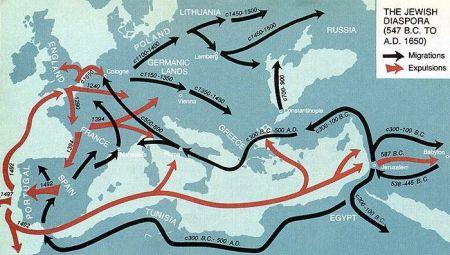
Complete list of Jewish expulsions (1,043 total) can be found from Judaism.is
From the right-wing side especially in USA the most modern version of antisemitism is “Qanon”. It is a baseless internet conspiracy theory whose followers believe that a cabal of Satan-worshipping Democrats, Hollywood celebrities and billionaires runs the world while engaging in pedophilia, human trafficking and the harvesting of a supposedly life-extending chemical from the blood of abused children. QAnon followers believe that Donald Trump is waging a secret battle against this cabal and its “deep state” collaborators to expose the malefactors and send them all to Guantánamo Bay.
QAnon also has its roots in much older antisemitic conspiracy theories. The idea of the all-powerful, world-ruling cabal comes straight out of the Protocols of the Elders of Zion, a fake document purporting to expose a Jewish plot to control the world that was used throughout the 20th century to justify antisemitism.
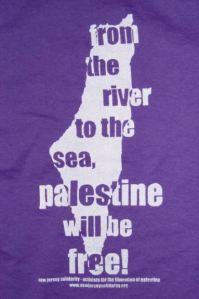 ”From the River to the Sea, Palestine will be free” – or “Palestine is ours from the river to the sea,” or “Palestine is Islamic from the river to the sea,” – is and forms part of, a popular political slogan used by Palestinian nationalists as well by anti-Zionist left-wing groups in Europe. It contains the notion that the land which lies between the River Jordan and the Mediterranean Sea be entirely placed under Arab rule at the cost of the State of Israel. The slogan describes quite well modern Palestinian nationalism and its anti-Zionist aim.
”From the River to the Sea, Palestine will be free” – or “Palestine is ours from the river to the sea,” or “Palestine is Islamic from the river to the sea,” – is and forms part of, a popular political slogan used by Palestinian nationalists as well by anti-Zionist left-wing groups in Europe. It contains the notion that the land which lies between the River Jordan and the Mediterranean Sea be entirely placed under Arab rule at the cost of the State of Israel. The slogan describes quite well modern Palestinian nationalism and its anti-Zionist aim.
Anti-Zionism has a long history of being supported right-wing and fascist (or “neo-fascist”) political views as well various Aryan / White-supremacist groups. In these instances, anti-Zionism is usually also deeply anti-Semitic, and often revolves around popular conspiracy theories even today.
Overall, Muslim antisemitism is dominant, but in Germany, right-wing antisemitism is more prevalent. The latter is also increasing overall. Left-wing antisemitism largely expresses itself in extreme hatred of Israel.
A number of sources link anti-Zionism with antisemitism. Campus research in 2016 in the United States by the AMCHA Initiative has also reported close geographical correlation between the two phenomena, accompanying a recent upsurge in anti-Semitism. Unsurprisingly, recent research has shown a close correlation between anti-Israeli views and anti-Semitic views based on a survey of citizens in ten European countries. “Anti-Zionism has become the most dangerous and effective form of anti-Semitism in our time, through its systematic delegitimization, defamation, and demonization of Israel.” (More about this e.g. in Anti-Zionism and Antisemitism: The Dynamics of Delegitimization edited by Alvin H. Rosenfeld)
My view
Why did the Jordanian-dominated Arabs of the West Bank not demand a state or the like for their people on July 4, 1967, but began to do so a week later? I think the answer is a political and tactical need and not so much a sudden national awakening. After the leadership of the Arab countries around Israel had tried in vain to destroy Israel militarily, they concluded that terror against colonialism under disguise of freedom fight and disinformation campaign to support this idea was the only way to achieve the goal. During last years situation has dramatically changed as the MidEast conservative monarchies had grown dependent on Western support to ensure their continued survival against e.g. thread from Iran.
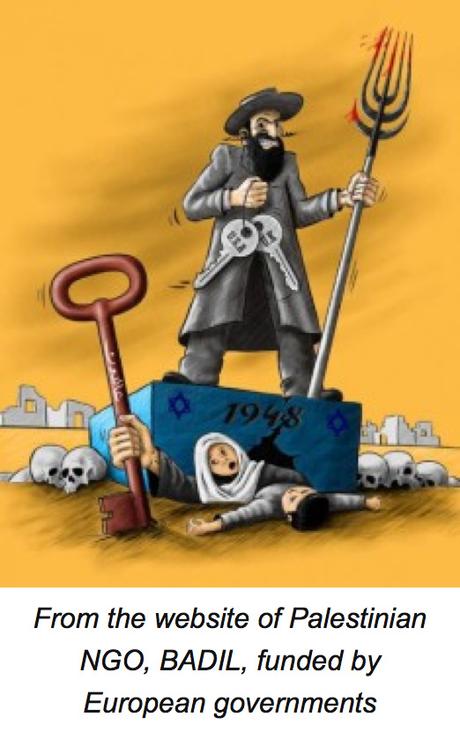 The end of the Cold War eliminated a major source of financial and political support for the Palestinian cause. The PLO’s financial problems did not reach crisis proportions, however, until the Gulf War 1990/91, when Arafat’s decision to support Iraq alienated its benefactors in the Gulf, notably Saudi Arabia and Kuwait. However aid from then more pro-Palestinian Western countries has helped to cover these shortages.
The end of the Cold War eliminated a major source of financial and political support for the Palestinian cause. The PLO’s financial problems did not reach crisis proportions, however, until the Gulf War 1990/91, when Arafat’s decision to support Iraq alienated its benefactors in the Gulf, notably Saudi Arabia and Kuwait. However aid from then more pro-Palestinian Western countries has helped to cover these shortages.
Antisemitism and anti-Zionism have still wide support in Western Europe. It has deep roots in history; its modern follow-up – anti-Zionism – was based on Soviet disinformation campaign which succeeded at emptying Zionism of its meaning as a national liberation movement of the Jewish people and associating it instead with racism, fascism, Nazism, genocide, imperialism, colonialism, militarism and apartheid. After Cold War more and part of more and more increasing Muslim population in Europe is keeping this campaign alive. It remains to see how negatively will European left-wing parties campaign against Israel so as to win domestic Muslim votes and can the right-wing parties take more neutral position to conflict as the “oil weapon” does not have its previous power anymore.

